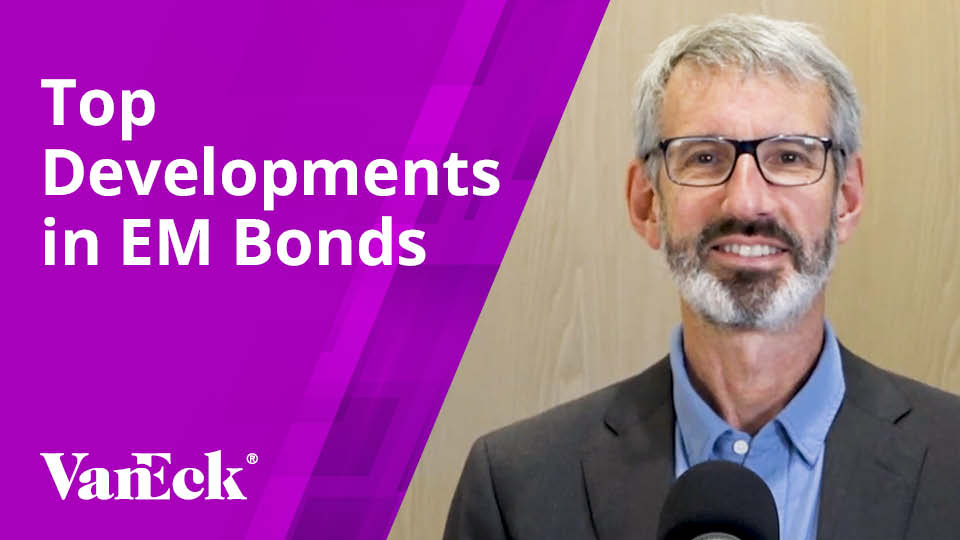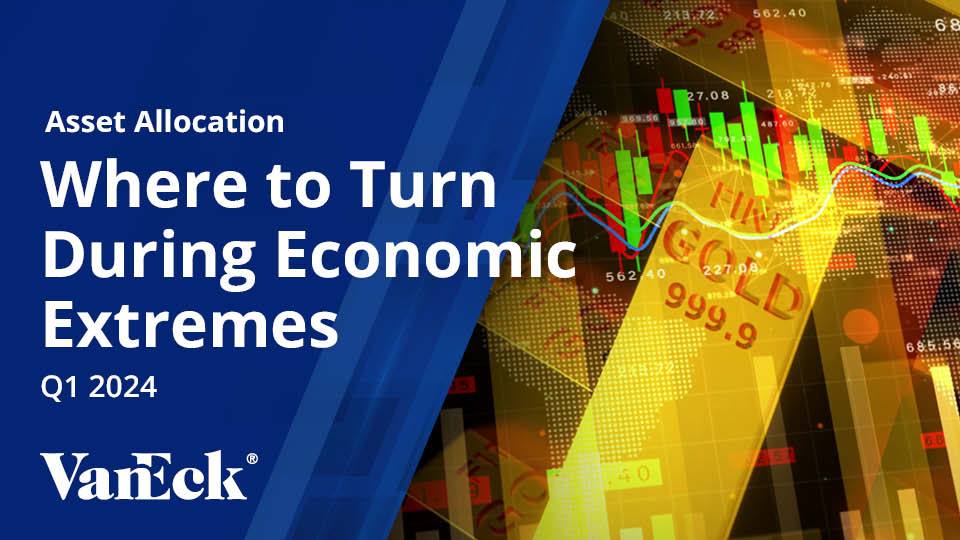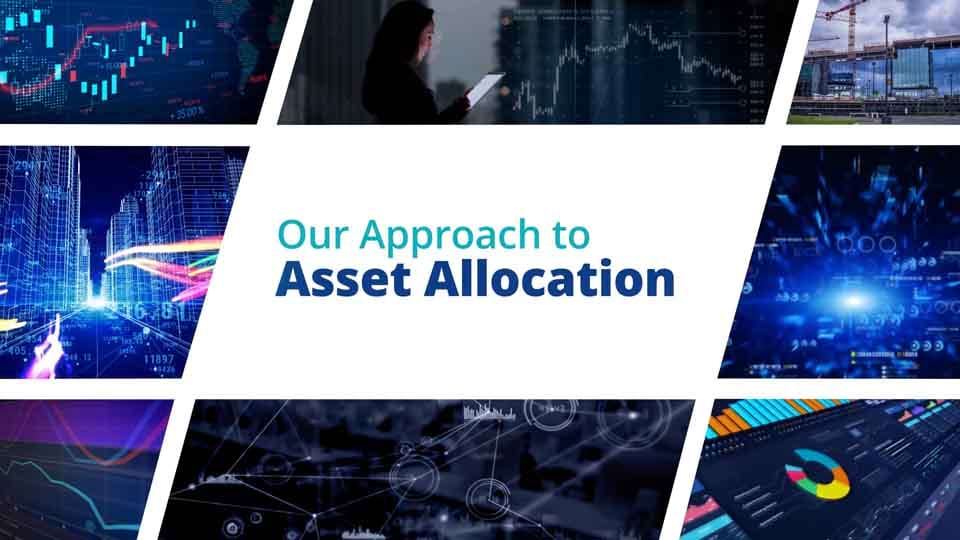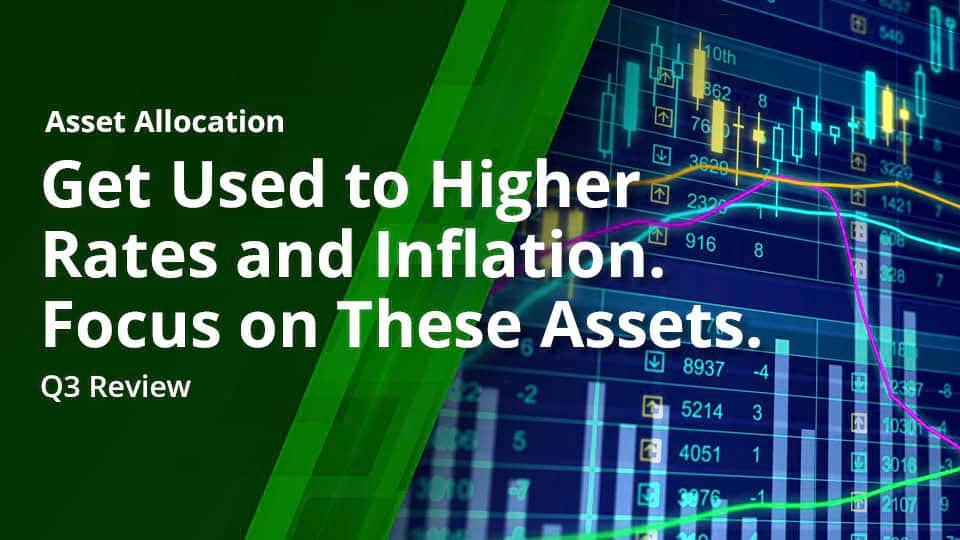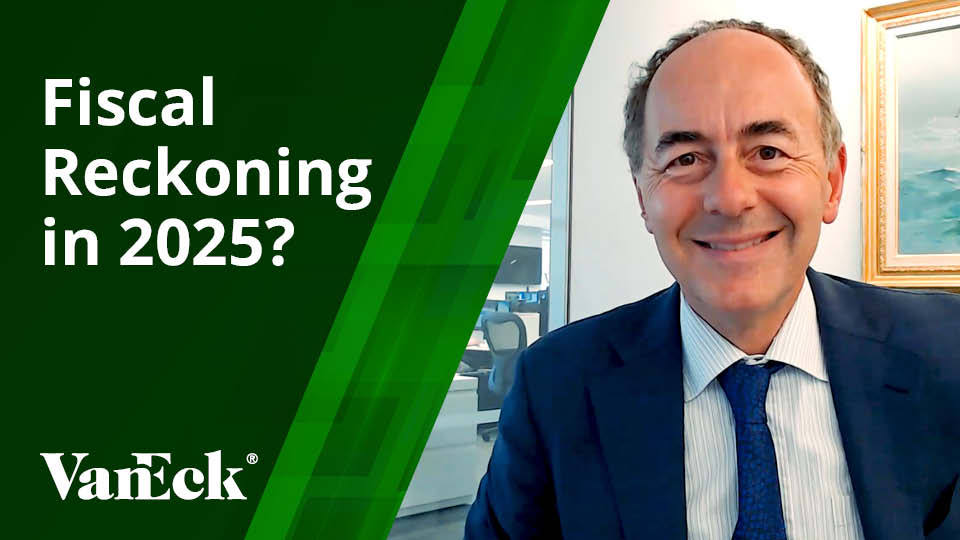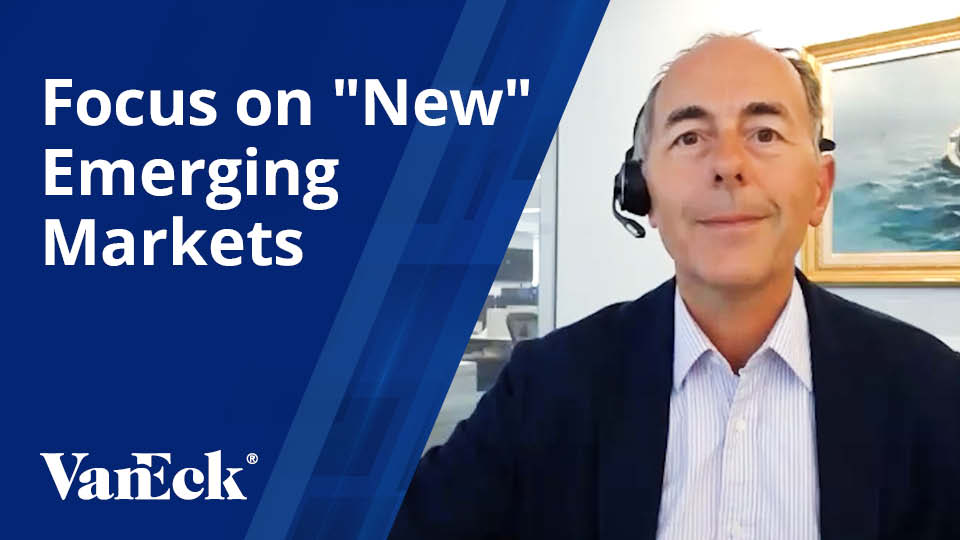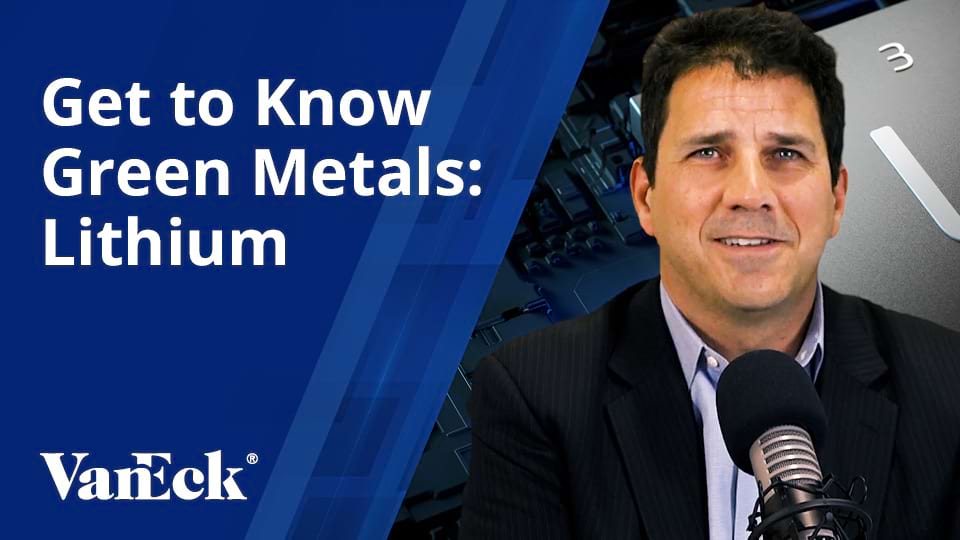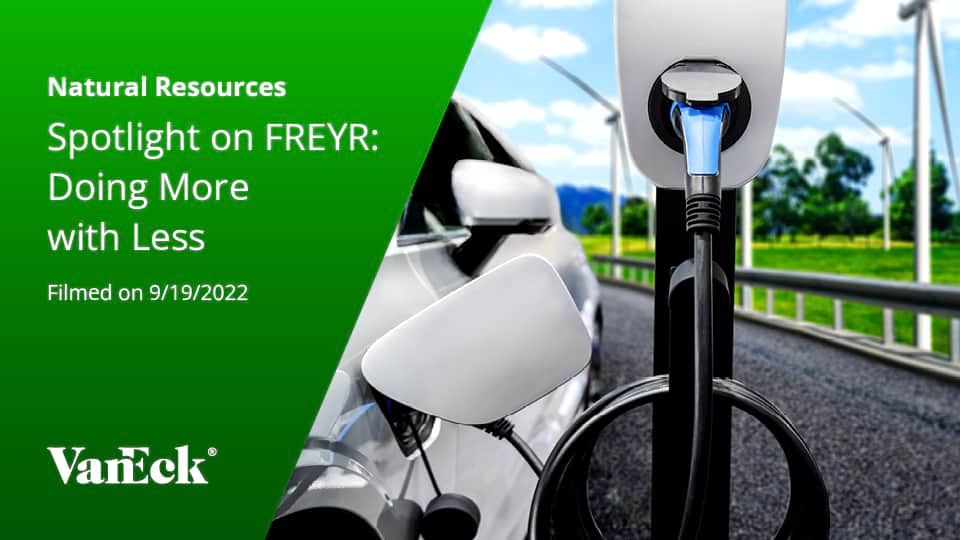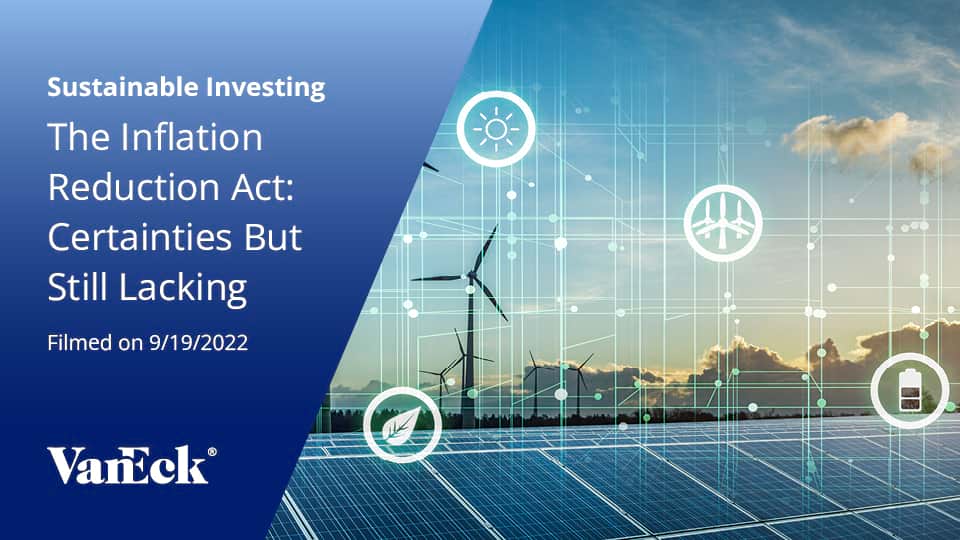Videos

One major tailwind driving the natural resources sector is copper demand, supported by AI data centers, electrification, grid build out, and power use, Portfolio Manager Shawn Reynolds explains.
Natural Resources Update and Outlook, Q2 2024
Hi, I'm Shawn Reynolds, the portfolio manager of the Global Natural Resources Strategy here at VanEck. Here's what we're seeing in the natural resources world today.
Positive Outlook for Natural Resource Equities
We're seeing a pretty constructive outlook for natural resource equities right now. We really see quite a lot of tailwinds behind the sector, really offsetting a number of headwinds that we've suffered for a few years here. When we really think about natural resource equities, we think about three things.
We think about the major reason to own natural resource equities. They do what they're supposed to do, when they're supposed to do it. They are an inflation hedge. They are leveraged to global growth and a diversification measure. And they're doing what they're supposed to do. The sector right now is one of the best sectors in the market. Energy is particularly doing well, but mining is coming up quickly. So overall, natural resources are doing well.
The second reason to really look at natural resources is because as we see relative to the last 10 years, there's a real difference between the supply-demand imbalance. In 2010 to 2020, we saw huge growth in supply, particularly of oil. And that impacted the decade overall and really put a downer on the entire sector. As we look forward right now, supply and demand is in balance. And that's really supporting very strong commodity prices and therefore profitability for the sector. So we really see a lot of change in behavior as well as in the dynamics of commodity resources.
And the third reason is really to think about those tailwinds that I mentioned earlier. There are a number of tailwinds coming in after the sector right now that are really helping from AI to electrification to power build out, EVs [electric vehicles], and also LNG [liquified natural gas]. And those things together are really pushing on the demand side and are really supportive of natural resource equities right now.
Factors Driving Natural Gas Demand
When we think about natural gas demand for the rest of the decade, really, really think about LNG build out as the major driver for the source of that new demand. Roughly speaking right now, we produce around 100 BCF a day, billion cubic feet a day of natural gas in this country. Over the rest of this decade, we see that growing by 20 BCF a day due to LNG build out. That's a huge, huge improvement or expansion of natural gas, 20% in the overall market is going to make a big, big difference. But then we layer on top of that, electrification and power build out and things like AI really pulling on power demand very, very strong. There's another seven or eight BCF a day of demand for natural gas for those sources. So when we put that together, we think about roughly 30 BCF a day for the rest of the decade and believe that that's going to be very supportive of natural gas prices for the rest of the decade.
Supply and Demand Dynamics of Copper
When we think about another tailwind that's really driving the natural resource sector, we think about the demand for copper. The demand for copper is going up dramatically, exponentially over the rest of the decade, really coming from things like electrification, grid build out, power use, power use by AI, data centers, and many, many other industrial and manufacturing situations that we see happen here in the United States.
And really over the rest of the decade, we see somewhere between 5 to 10 tons of extra copper needed. This is a 24-ton market and we're seeing 5 to 10 coming from just the US in terms of building out all those things. So the demand for copper is going to be very, very strong. The supply for copper has been fairly abundant over the last decade, but we see in front of us a real dearth of activity. We see several new mines being built over the next couple years, but after that it's coming to a halt. And so that demand and supply imbalance is going to be very tight as we see a huge build out of technology, particularly with regards to artificial intelligence and data centers.
IMPORTANT DISCLOSURE
This is not an offer to buy or sell, or a recommendation to buy or sell any of the securities, financial instruments or digital assets mentioned herein. The information presented does not involve the rendering of personalized investment, financial, legal, tax advice, or any call to action. Certain statements contained herein may constitute projections, forecasts and other forward-looking statements, which do not reflect actual results, are for illustrative purposes only, are valid as of the date of this communication, and are subject to change without notice. Actual future performance of any assets or industries mentioned are unknown. Information provided by third party sources are believed to be reliable and have not been independently verified for accuracy or completeness and cannot be guaranteed. VanEck does not guarantee the accuracy of third party data. The information herein represents the opinion of the author(s), but not necessarily those of VanEck or its other employees.
You can lose money by investing in the Strategy. Any investment in the Strategy should be part of an overall investment program, not a complete program. The Strategy is subject to risks which may include, but are not limited to, risks associated with active management, commodities and commodity-linked derivatives, derivatives, direct investments, emerging market issuers, ESG investing strategy, foreign currency, foreign securities, global resources sector, market, operational, underlying funds, small- and medium capitalization companies, special purpose acquisition companies, and special risk considerations of investing in Canadian issuers, all of which may adversely affect the Strategy. Emerging market issuers and foreign securities may be subject to securities markets, political and economic, investment and repatriation restrictions, different rules and regulations, less publicly available financial information, foreign currency and exchange rates, operational and settlement, and corporate and securities laws risks. Small- and medium-capitalization companies may be subject to elevated risks. Derivatives may involve certain costs and risks such as liquidity, interest rate, and the risk that a position could not be closed when most advantageous.
All investing is subject to risk, including the possible loss of the money you invest. As with any investment strategy, there is no guarantee that investment objectives will be met and investors may lose money. Diversification does not ensure a profit or protect against a loss in a declining market. Past performance is no guarantee of future results.
No part of this material may be reproduced in any form, or referred to in any other publication, without express written permission of Van Eck Securities Corporation.
© 2024 Van Eck Associates Corporation
666 Third Avenue, New York, NY 10017






































